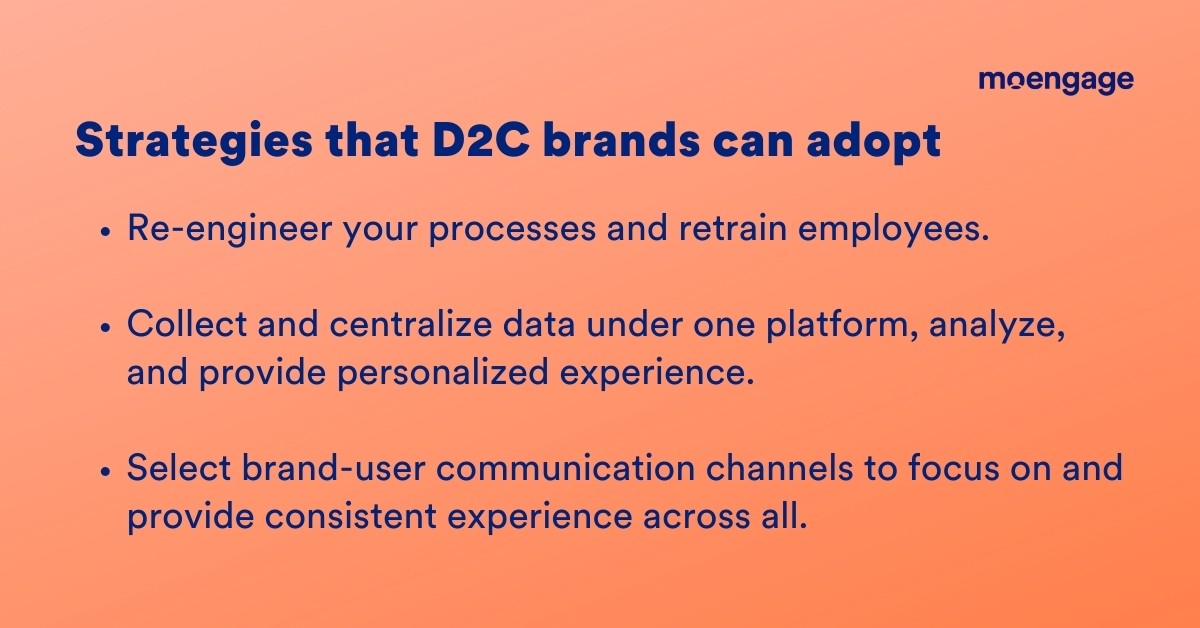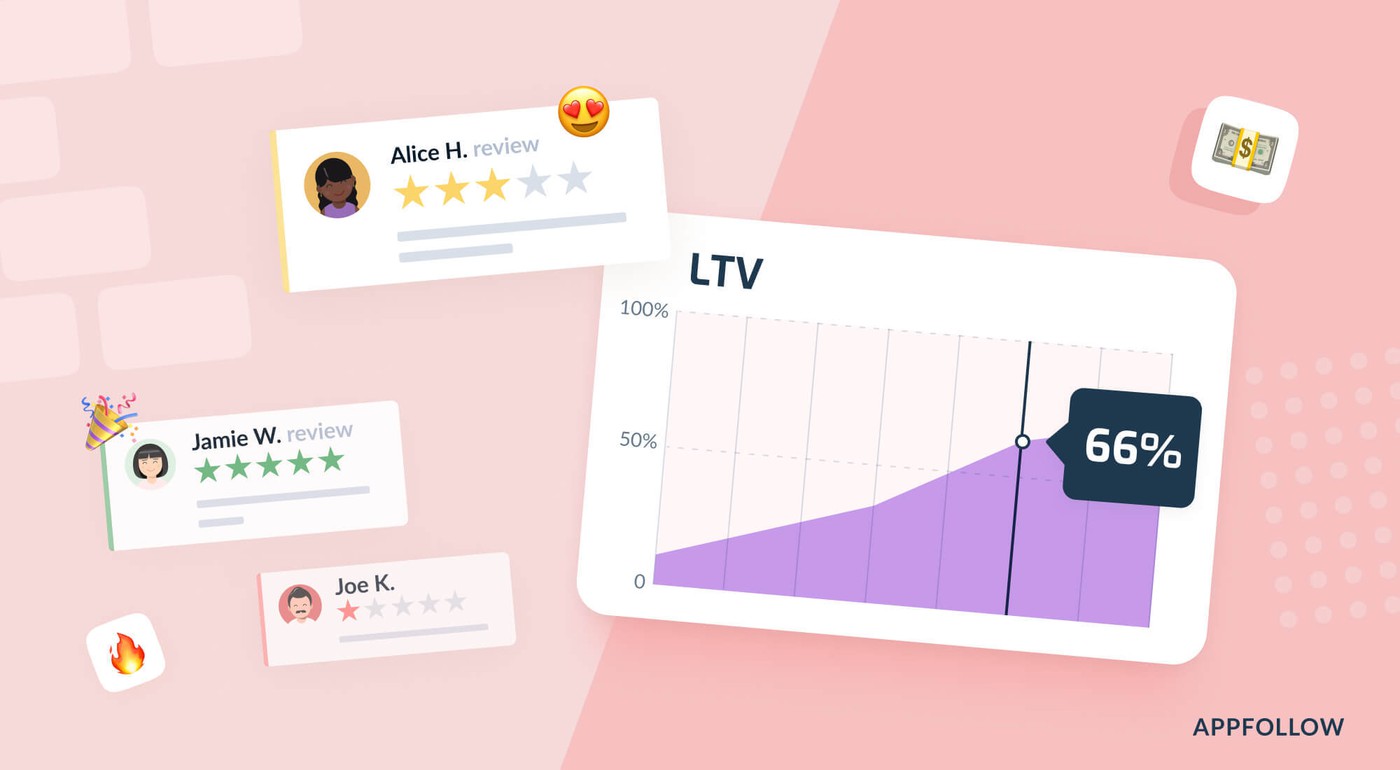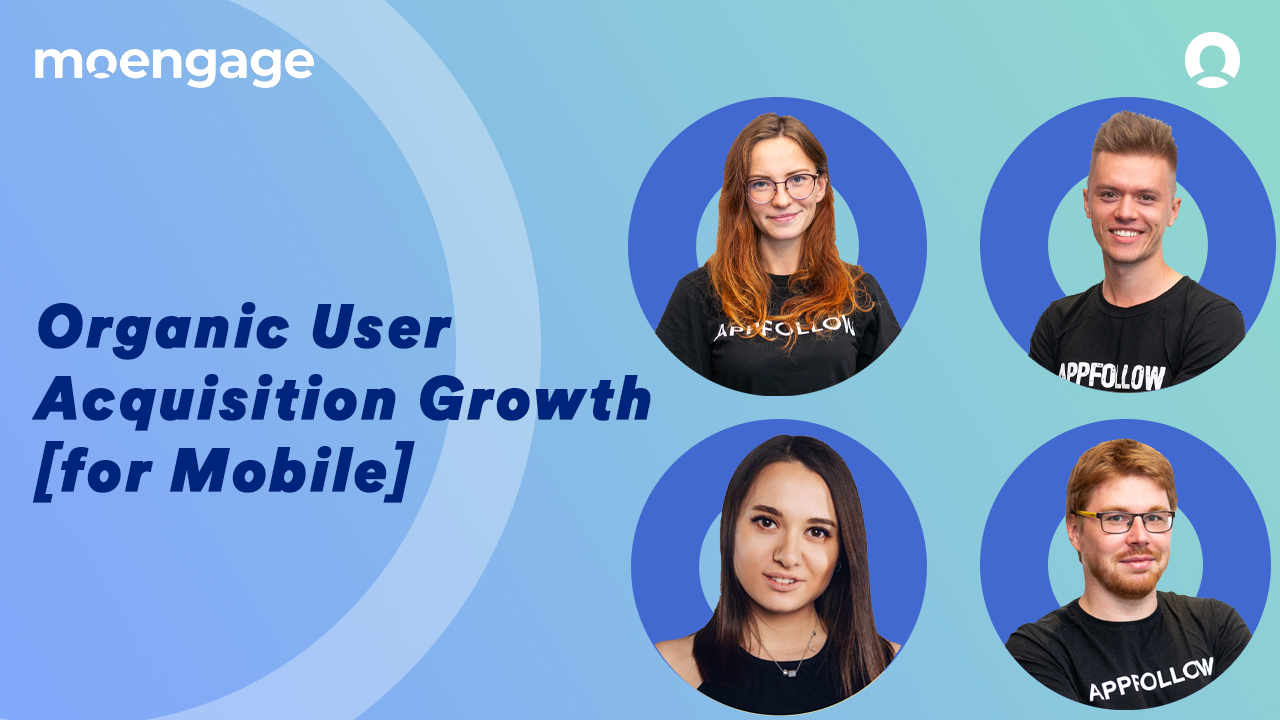Retention Metrics for DTC Brands: What Brands Need to Know

Table of Content:
In the last few years, Direct-to-Consumer (DTC) brands have become mainstream, enjoying an all time highest popularity surge. In fact, an IAB report states that 97% of the consumers in the UK are aware of at least one of the top 50 leading brands, while 39% have purchased from more than one with 10% of the users having purchased from more than five brands. Ignoring mobile app review is a mistake - learn how to leverage them for success.

The steady growth of DTC brands shouldn’t really come as a surprise, especially during the pandemic when offline buying gave way for online shopping, curb-side pick ups, and socially-distanced deliveries. With COVID19 acting as a catalyst, an already flourishing DTC industry was further rewarded for their digital-first approach.
The major advantage, however, is that with a DTC strategy, you tend to develop deeper connections with your users, building loyalty while providing seamless experience and personalized offers, making it a win-win situation for both parties.
To sustain this new found growth, DTC brands need to meaningfully engage, retain and build a strong relationship with their users, through a well-planned strategy. In order to measure the effectiveness of the strategy, the brand needs to define key retention metrics, which we are going to cover over the course of this session.
What are the clear benefits offered by a DTC strategy?
- Higher margin of profitability and increased sales opportunity
The DTC model removes the dependency on middlemen allowing brands to earn more profit. Brands no longer have to pay the additional markup and can instead earn profits directly. On an average, a DTC brand can save 10-15% on wholesale distribution and 15-40% from retailers. The DTC model also showcases a wider range of products while creating a shopping experience not available on other platforms. - Offer more personalized experiences
DTC brands naturally get better access to consumer data, providing an opportunity to personalize user experience. This leads to increased LTV, thus higher profits. The behavioral data can be used to segment consumers into different categories.
Based on the categories, personalized offers and discounts can be communicated instead of running generic engagement campaigns. This personalization reduces overall marketing cost by 10%-20% while increasing conversion by 10%-15%! - Build customer loyalty
A DTC strategy provides more opportunities to directly connect with the user unlike e-commerce and traditional retail brands. From personalized offers to loyalty rewards, DTC brands have several cards up their sleeves. You can identify customers based on the frequency of purchase and reviews, and propensity to recommend your product/service. You then need to build a relationship with them that goes beyond transactions, viz. Sending handwritten thank you notes or using social media to provide tips and tricks.
Post-pandemic economic situation has affected how users look at loyalty programs:

Did you know that more than 75% of customers are willing to switch brands over the rewards provided under loyalty programs? Find out more about loyalty programs and what KPIs you need to track in our extensively researched article.
Retention metrics that DTC brands should be aware of
Without any further ado, let’s look at what metrics should be measured, and how they can improve your strategies:
- Customer retention rate
Customer retention rate indicates how many customers your brand retained during a specific duration. This is an important metric as it indicates if you have been able to deliver a significant value to customers.
Customer retention rate is calculated as: ((EC-NC)/SC)*100.
-EC is the number of customers at the end of the period
-NC is the number of new customers added in the period
-SC is the number of customers at the start of the period
You need to calculate these metrics regularly and compare their previous results with the current ones to track their performance.

- Customer Lifetime Value (CLTV)
You need to measure the lifetime value of your customer to calculate how much money you must invest to acquire new customers and retain the existing ones. The lifetime value of a customer will indicate how much money the customer is expected to spend on your products during the entire lifetime.
CLTV is calculated as: CLTV = Customer value*Average customer lifespan.
-Customer value is average purchase value * the average number of purchases made by them.

- Customer Churn Rate (CCR)
Churn rate indicates the loss that your brand faces when customers stop purchasing from you. A high churn rate can have a drastic impact on your brand’s profitability. Measuring the churn rate will give you an idea of what’s causing customers to leave your brand and help you make decisions to improve retention. - Revenue share from returning customers
This is the share of the revenue you can earn from repeat buyers. Technically, a customer is considered a returning customer when they have made at least two purchases in a particular period.
According to Alex Schultz, VP at Facebook, you are doing relatively well if you have 20%-30% of customers returning every month.
You can calculate the repeat customer rate as:
Repeat Customer Rate (%) = [No. customers who've purchased before / Total no. customers] × 100
- Repeat Purchase Ratio (RPR)
Repeat purchase ratio is the proportion of customers who have shopped with your brand more than once. The repeat purchase ratio takes into consideration the purchases from repeat customers divided by all purchases made on the site during a specific period. - Average Order Value (AOV)
AOV is used to measure the average total of every order placed with your brand over a specific period. Knowing the AOV will help you to understand if your retention strategies are working well. It will also enable you to better understand your customer's behavior and plan strategies for cross-selling, upselling, etc., to keep your customers engaged.
AOV is calculated as: AOV = Revenue / number of orders
- Average time between orders
To get repeat customers, you must know the average time taken between placing the first order and the next order. This will help you plan when you should create a retention campaign to nudge the customers to make the next purchase. - Average number of orders per customer
This metric will help you track the average number of orders your customers have placed over the last 30 days. Comparing it with the last duration’s numbers will tell you how engaged your customer is with your brand. - Cost of Goods Sold (COGS)
It refers to the direct costs involved in producing the goods sold by your brand. This cost includes the cost of materials and labor and excludes other expenses such as distribution costs. COGS is an indicator of your brand’s profitability.
Actionable strategies that D2C brands can implement to retain customers
Now that we have discussed the retention metrics a DTC brand should be aware of, it is time to look at some of the actionable strategies that can be implemented to engage and retain users better.

- Creating unique shopping and checkout experience
There are various reasons why customers add products to the cart and abandon it. It could be anything ranging from too many steps to be completed to check out the products or adding personal details manually every time on shopping.
Remember that customers shop online for convenience. Hence, ensure that your checkout process saves their time and does not require them to follow too many steps to checkout. Adding surprise discounts, freebies, or coupons are some other ways to create a unique experience.
One of the biggest retail sports brands in the world, Decathlon, ramped up digital transformation to offer that high-touch personalized offline experience to users on an online platform, in light of COVID19 restrictions not allowing users to step out. - Create a brand that offers hyper-niche product or service
The apparel and cosmetics categories are already filled with competitors. Given that most of your competitors will be catering to popular segments of customers, you will have to find a way to create your space.
One way to do it is by offering a hyper-niche product or service. This will help you to dominate the already overcrowded space. So, how about creating apparel for people who love Geek themes or cosmetics for people with specific skin disorders? You might surely find takers for your brand, which could help you build a loyal fan base. Research on the current gaps in the industry, analyze what you can provide to bridge that gap, and start implementing your strategy.
Find out how AppFollow's Compare feedback tool can help you analyze your competitors in your market here.
- Involve customers to create low purchase frequency
If you are selling premium apparel, it is unlikely that your customer will purchase another once again within a month or two. So, how do you drive engagement in such cases?
You could offer them referral benefits to your customers. For example, if they refer your brand to their friends and colleagues, you could offer them a referral discount on their next purchase. You could also conduct special preview programs before your new creations are open to the public. This will make your customer feel special and make them strong advocates of your brand. - Drive engagement through personalized emails
Do you know marketers have reported a whopping 760% increase in email revenue due to personalized and segmented campaigns. If you want to engage your customers and retain them, you need to plan personalized email campaigns to attract them to shop with you again. These emails could be discounts, exclusive previews, and surprise flash sales. This will also help you to re-engage the customers who were inactive and drive sales. - Time your emails well
Relevance is the key to improving customer engagement. If you want your customers to shop with your brand, ensure that you have timed your emails well too. Merely personalizing the content will not work.
You also have to be mindful of the timing. Analyze the most active time of your customer and set the timing accordingly to ensure maximum open and click rates. Also, keep tabs on the holiday seasons and major events in your customer’s location, so you can plan a special marketing campaign around it. - Personalized reminders for replenishing stocks
Your customers are busy people who might not remember to replenish their monthly stock of essential products such as tea and coffee. Show them that you care by sending them personalized reminders to replenish their stocks.
You can also include personalized recommendations of products that they can buy with coffee and tea. This will encourage them to re-engage with your brand and even buy more products. - Offer sample products
Studies reveal that free samples can boost sales to up to 2000%! If you have come up with a new variety of products in new flavors and tastes and want your customers to try it, you can offer free samples. This will help you hook the customers to your brand and convert them to paid customers if they like it. - Leveraging seasonality i.e. holiday gift packages
Create a special holiday package for your customers for special holidays such as Christmas and Thanksgiving Day. This will help you create a recall value for your products and help you establish a deeper connection with your customer during special occasions. Your special gift packages will also serve as an opportunity to create brand awareness and acquire new customers who may have experienced your premium coffee or tea at the customer’s home during the holiday celebration. - Create authentic content
Today’s customers like to see authentic content. By authentic content, we mean content that clearly communicates the values and mission of your brand. Nike is renowned for creating authentic content. Its single catchphrase - Just Do It encapsulates what it stands for, and its ads align with it seamlessly. Sports brands have a penchant for creating ads that capture the sports fans’ ethos and build authentic and relevant content around it. - Map out customer journey
According to an Acquia survey, 76% of customers will quit a brand if it offers a bad experience. To retain customers, you need to create a memorable experience and that’s possible only when you are able to predict their journey. By creating customer journey maps, you will be able to predict how your customers interact with your brand and work on improving that interaction and engagement. - Get direct customer feedback whenever possible and act
Customers like to be heard. Hence, collect direct feedback whenever possible. You can also use social listening tools to monitor what customers have to say about your brand on social media. This will give you an idea of what customers like and dislike about your brand. When you act on their feedback, you are likely to see an improvement in customer retention. - Repeat successful campaigns to attract loyal customers
Some marketing campaigns will always have a high recall value. So, do not hesitate to repeat those successful campaigns to attract more customers and convert them into customers with your unique experience. - Stop working with referral sources bringing in only one-timers
Although influencers can help you with your brand reach, they cannot guarantee you conversions or long-term relationships with the customer. For that, you need to create unique experiences for your customers. Ultimately, it is the experience that will bring you more conversions. So, stop working with influencers and referral sources that will work just one time and invest your time and money in building a superior customer experience. - Create engaging post-purchase content
Customers, especially the millennials and Generation Z, love engaging with brands that are authentic, honest, conscious about important events that are impacting the society and environment. So, create content around the topics that resonate with your customers and build a meaningful connection with your customers. These could be in the form of exclusive insider content, CSR projects that your brand has undertaken, user-generated content from your loyal customers. Keep it as authentic as possible rather than making it a marketing pitch.
We hope these strategies will help you create a winning experience for your customers and build a loyal customer base. Once the flood of positive reviews comes in, get some proper responding to positive reviews examples and use them at will. Enjoy!







